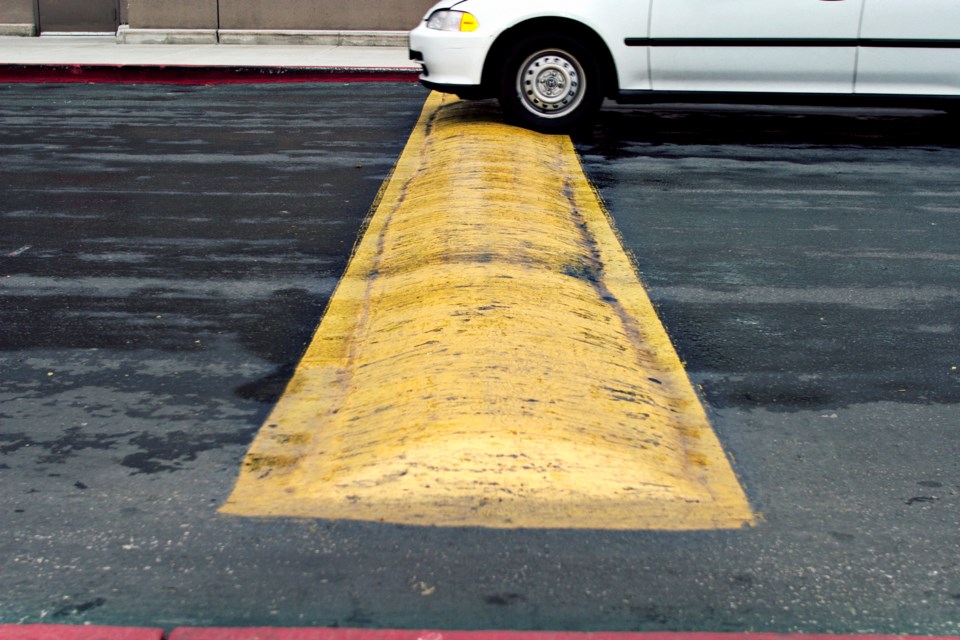According to data compiled by the Insurance Corporation of British Columbia (ICBC), speed was the sole top contributing factor in vehicle crashes in seven years from 2011 to 2020. This statistic, as well as concerns over noise, and the safety of cyclists and pedestrians, has prompted some municipalities across the province to take action.
In April 2019, Vancouver councillor Pete Fry introduced a motion to lower the speed limit on select residential streets from 50 km/h to 30 km/h. After the motion passed unanimously, a pilot project began in the Grandview-Woodland neighbourhood. Other new guidelines, such as maintaining the speed limits at school and playground zones at 30 km/h regardless of the day and time, were also adopted.
Vancouver is not alone in this endeavour. Surrey announced last year the start of its own pilot project, which implemented limits of 40 km/h or 30 km/h in six neighbourhoods. In Ontario, councillors in Sudbury recently agreed to institute a similar trial.
Earlier this month, Research Co. and Glacier Media revisited this issue, at a time when more British Columbians are driving to school or work as the COVID-19 pandemic wanes. The results show that the public has grown fonder of the idea of lower speed limits in residential areas.
In our most recent poll, more than seven in 10 of the province’s residents (72 per cent) believe the pilot project currently underway in Vancouver is a “very good” or “good” idea, up six points since our previous survey conducted in 2021.
Positive views on Vancouver’s pilot project climb to 76 per cent among women and to 78 per cent among British Columbians aged 18 to 34.
Regionally, support is highest in southern B.C. (84 per cent), followed by northern B.C. (77 per cent), the Fraser Valley (74 per cent), Metro Vancouver (71 per cent) and Vancouver Island (66 per cent).
We also asked British Columbians if they would like to see the speed limit reduced to 30 km/h on all residential streets in their own municipality, while keeping the speed limit on arterial and collector roads at 50 km/h. This year, two-thirds of the province’s residents (66 per cent) say they would like to see this scenario materialize, while 28 per cent disagree and seven per cent are undecided.
Support for a broader regulation that would reduce the speed limit on residential streets has increased by five points since 2021. While majorities of British Columbians of all ages are in favour of this proposed guideline, there is a generational divide. Those aged 18 to 34 are more likely to favour this change (70 per cent) than their counterparts aged 35 to 54 (65 per cent) and aged 55 and over (62 per cent).
It is also important to note that lowering the speed limit on residential streets is a popular idea with supporters of all three major parties. About two-thirds of British Columbians who voted for the BC Liberals (65 per cent) and the BC Green Party (67 per cent) in the 2020 provincial election would like to see this regulation implemented, along with 74 per cent of those who cast ballots for the BC New Democratic Party (NDP).
In spite of the increased appetite for legislative action, there is little change in the way British Columbians look at the driving behaviour of their friends and neighbours. As was the case last year, 39 per cent of the province’s residents say that, on the street where they live, they see a car that they perceive is circulating above the current speed limit of 50 km/h “at least once a day.”
On this indicator, the Fraser Valley is ahead of all regions, with 45 per cent of residents saying they are exposed to speeders on their street every day. The proportions are lower in Vancouver Island (42 per cent), northern B.C. (41 per cent), Metro Vancouver (37 per cent) and southern B.C. (35 per cent).
There are other ways to ensure that speed limits are respected. Last month, the Ford Motor Co. revealed that it is testing a new technology that automatically reduces the speed of vehicles in accordance with existing limits. Depending on the success of this trial, we could be looking at a future where it will become impossible for a vehicle to go over the speed limit at a specific location.
We will have to wait a few months, or even years, to see if vehicles can be programmed to be more mindful of speed limits than human drivers. At this point, our research in British Columbia shows that the stereotype of the speeding young driver is not backed by data. If anything, what we see is certain members of an older generation showing resistance to altering their driving habits.
Mario Canseco is president of Research Co.
Results are based on an online study conducted from June 3 to June 5, 2022, among 800 adults in British Columbia. The data has been statistically weighted according to Canadian census figures for age, gender and region in British Columbia. The margin of error – which measures sample variability – is plus or minus 3.5 percentage points, 19 times out of 20.



